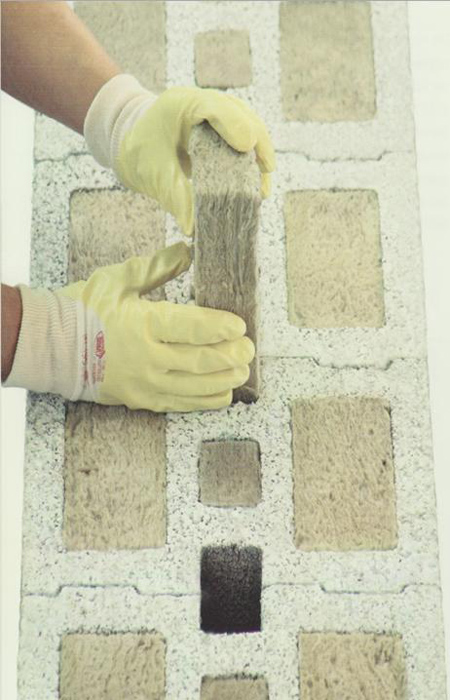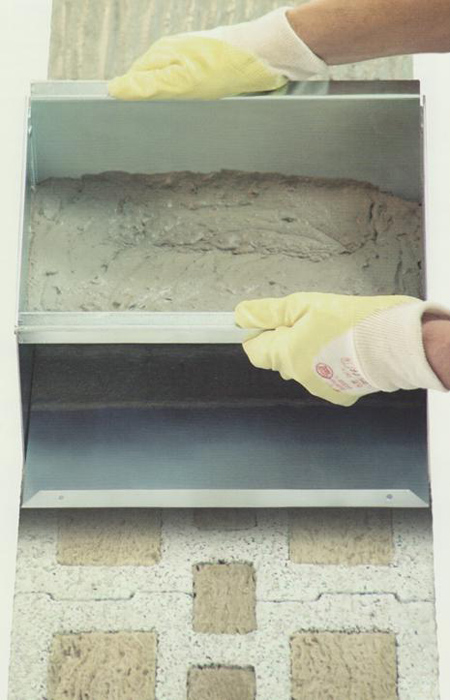Processing of KLB-Kalopor
Notes on efficient work
KLB-Kalopor are placed, as typical for KLB blocks, narrowly in a row in the tongue and groove system, into the thin-bed mortar spread using a KLB-mortar sled. This creates considerable rationalisation advantages. KLB-Kalopor has no lid closing the block towards the upper part.
In the grid dimension of 50 cm (30 type block, 20 DF) or 25 cm (36.5 block, 12 DF) the use of divisible end blocks helps create clean ends in the corner area and for wall openings, and a half-timber masonry bond while complying with the overlap dimension. For deviating grid dimensions the blocks must be custom-divided with a mason’s saw. The insulation is also cut to fit and remains in the required parts in the chambers.
In the area of window openings MOSO perforated tape must be placed under the last layer into the thin-bed mortar, which reaches on both sides at least 50 cm into the adjacent masonry and is bricked over there.
The stone wool cuttings are, except for the opening in the butt joint, filled into the chambers at the plant. On the construction site, after laying each layer of flat blocks, the mason must fill the chambers now remaining open with the cuttings delivered in a cardboard box. For insertion the cutting is pressed together lightly and pushed into the chamber. The chambers are slightly conical and guarantee a firm hold of the cutting, which expands again after insertion and claws onto the light-weight concrete of the chambers. The interruption of the insulation layers in the area of the unmoulded butt joints, which is usual with commercial, commercially available masonry systems with integrated insulation, is thus avoided. Masonry made of new generation KLB-Kalopor thereby also has additional reserves with regard to execution errors in this particularly sensitive area.



